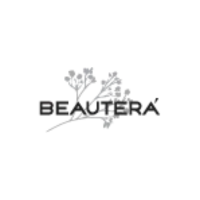The End of Guessing: Skincare Trends That Target Skin Types Correctly

For years, skincare has often felt like a guessing game—trial and error with cleansers, creams, and treatments that promised glowing skin but failed to deliver because they weren’t tailored to individual skin types. Today, this uncertainty is finally coming to an end. Thanks to advanced formulations, targeted ingredients, and AI-driven skincare assessments, the beauty world is shifting towards precision. Products now speak directly to oily, dry, sensitive, or combination skin types rather than trying to serve everyone. At the heart of this personalized movement is the rise of effective single-ingredient stars, like Kojic Acid Cream, known for addressing hyperpigmentation with targeted accuracy.
Personalized Skincare Based on Skin Type
Gone are the days of one-size-fits-all moisturizers. Skincare in 2025 is about micro-targeting. Brands are designing entire product lines specifically tailored for oily, dry, or combination skin. Dry skin types now benefit from lipid-rich moisturizers with ceramides and fatty acids, while oily skin gets lightweight, gel-based hydrators with niacinamide or zinc. This differentiation is more than marketing—it’s science-backed care that prevents the irritation and imbalance caused by using the wrong formulas.
Moreover, brands are clearly labeling their products by skin type. No more decoding vague product promises—consumers can now find exactly what suits them. These focused options are reducing breakouts, flare-ups, and the cycle of overcompensation (like drying out oily skin only to trigger more oil production). Instead, skin gets exactly what it needs—nothing more, nothing less.
Skin Tech Is Getting Smarter
Artificial intelligence and diagnostic skin tools are becoming skincare essentials. Apps and digital devices can now scan your skin through your phone’s camera and recommend products based on visible issues like enlarged pores, dehydration, redness, and texture. These apps not only suggest products but also track progress, adapting suggestions over time.
This real-time feedback eliminates guesswork. Consumers no longer rely solely on influencers or trial products—they have data about their skin. This is particularly helpful for those with fluctuating skin types, such as people experiencing hormonal changes, climate transitions, or even stress-related skin reactions. Skincare isn’t just personalized anymore—it’s adaptive.
Hero Ingredients for Specific Needs
Another major trend helping target skin types more accurately is the rise of powerful, singular ingredients in skincare. Instead of overloaded serums with 15 different actives, more users are turning to mono-ingredient products to solve specific problems. Think: salicylic acid for oily, acne-prone skin; hyaluronic acid for dehydrated complexions; or colloidal oatmeal for soothing sensitive skin.
Consumers are now learning what works best for their skin and using those ingredients in rotation based on need. For instance, those with combination skin might use niacinamide in the morning to regulate oil and a peptide-based cream at night for barrier repair. This level of control over what goes on your face is part of the larger “skinimalism” trend—streamlined routines with more intent and less clutter.
Barrier Repair Is Taking Center Stage
Targeting skin types correctly also means addressing a universal issue: the skin barrier. No matter the type—oily, dry, sensitive—an unhealthy skin barrier can disrupt everything. In response, skincare brands are focusing on ingredients like ceramides, panthenol, squalane, and probiotics that support barrier health.
By restoring the skin’s natural defenses, these products help all skin types function better. For example, oily skin that’s been stripped by harsh exfoliants often turns reactive; supporting the barrier helps regulate oil naturally. Meanwhile, dry skin retains moisture more effectively with a strong barrier. The barrier-first approach is not about fighting your skin—it’s about working with it.
Targeted Serums and Multi-Zone Routines
Just as people contour their makeup to match different facial zones, they’re now applying the same logic to skincare. Multi-zone or "zoning" routines use different products for different parts of the face depending on their unique needs. For example, someone might apply a mattifying serum on the T-zone, a hydrating essence on the cheeks, and a calming cream on reactive areas like the jawline.
This technique is especially helpful for those with combination skin. Instead of compromising with a single product, users are learning to treat their skin like a landscape—with dry patches, oily areas, and sensitive zones all addressed in a personalized way. It requires more awareness but delivers far better results and ensures no area is under- or over-treated.
From Trend to Lifestyle: Long-Term Skincare Intelligence
What we’re witnessing now isn’t just another fleeting skincare trend—it’s a fundamental shift in how people think about their skin. Instead of jumping between popular products and viral hacks, today’s skincare consumers are becoming more educated and intentional. They understand their skin type, its changing nature, and the ingredients that make a difference.
This knowledge is empowering. It means consumers are investing in skincare that makes sense for them, leading to better long-term results. With fewer breakouts, less redness, and overall healthier complexions, skincare is finally less about chance and more about strategy.
Conclusion
The guessing game is over. With the rise of targeted skincare—backed by skin type-specific formulations, ingredient transparency, smart tools, and barrier support—users are achieving better skin with less confusion. Products like Kojic Acid Cream are no longer blindly applied but are chosen because they align with a skin type’s exact needs. The future of skincare is smarter, calmer, and most importantly, more personal. As knowledge continues to grow, this new approach to skincare won’t just be a trend—it’ll be the new normal.
Note: IndiBlogHub features both user-submitted and editorial content. We do not verify third-party contributions. Read our Disclaimer and Privacy Policyfor details.







